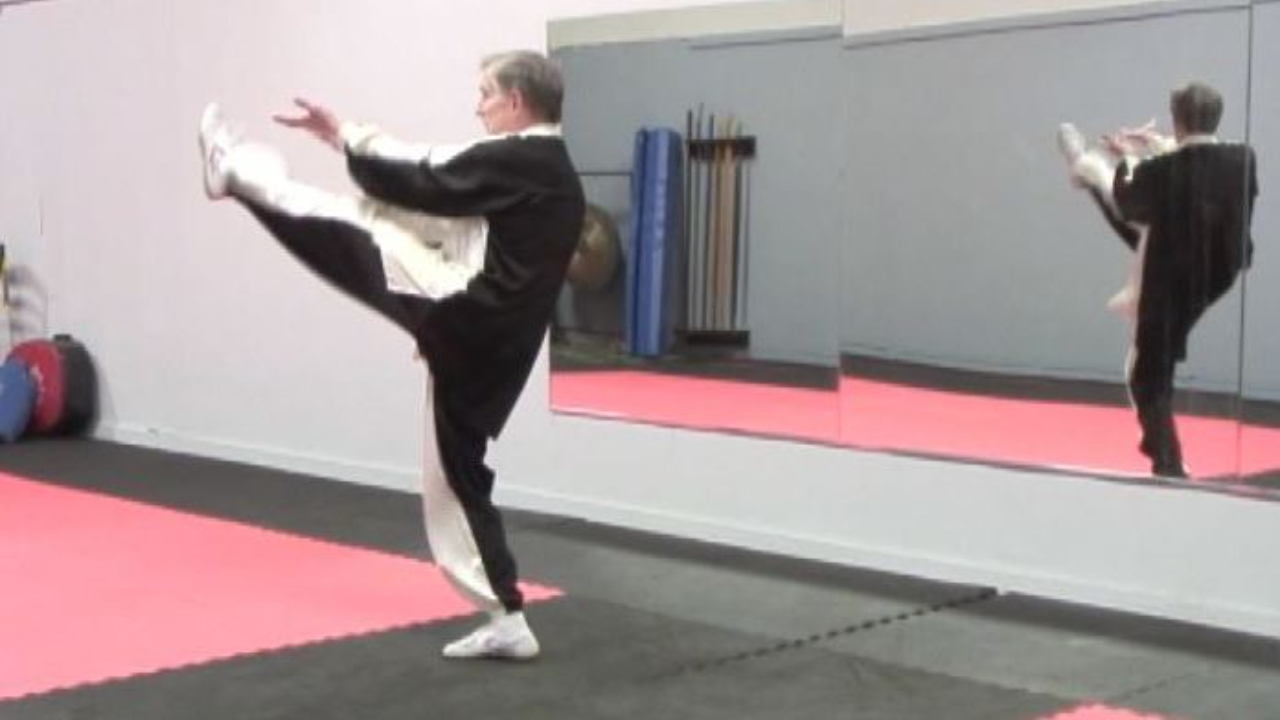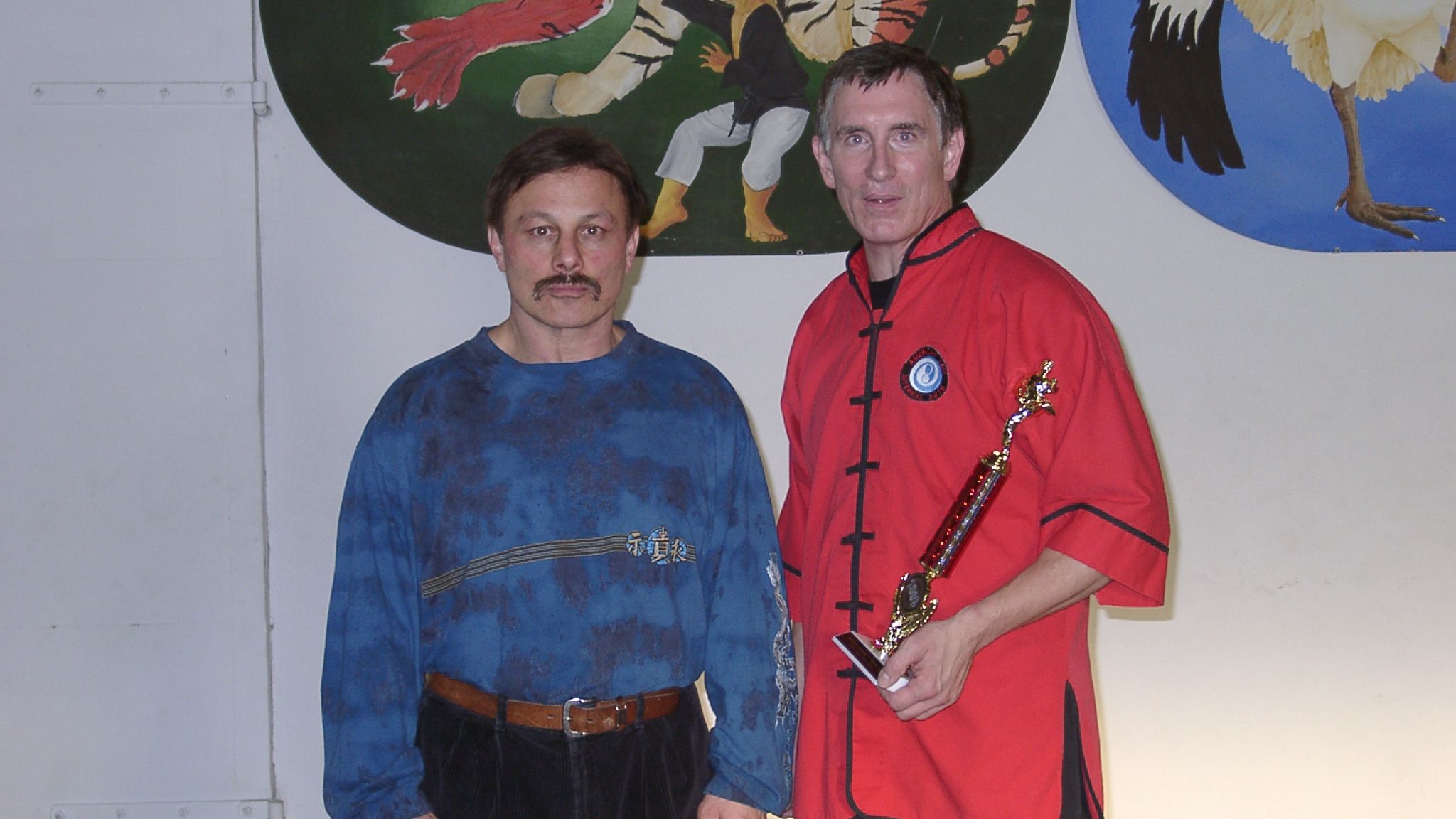Does Tai Chi, Xingyi and Bagua Really Help the Flow of Lymphatic Fluid? The Real Science Behind Internal Movement and Your Body's Natural Plumbing

Sometimes, I read articles or books about Taiji, Bagua and Xingyi, and health claims are made that sound scientific, but if you look a bit deeper, you find the claims aren't supported by medical science or physiology. Sometimes, there is some truth to the claim, but the wording is misleading.
One of those claims that might misdirect you a bit is this one: the movements of the internal arts "stimulate the flow of lymphatic fluid" (or "drainage of lymphatic fluid").
If you know me, you know that I am a critical thinker who is open to evidence, but when a martial artist makes medical statements, I want them grounded in good science and accurate wording.
Let's look at this claim -- that if you do the internal arts you are stimulating the flow of lymphatic fluid.
The lymphatic system collects excess fluid from tissues and returns it to the bloodstream. Lymph nodes act as filters to stop pathogens, debris, and abnormal cells, while the liver and kidneys handle most of the chemical detoxi...
A Tribute to My Friend John Morrow - A Dedicated Martial Artist

I first met John Morrow in 1990 at a tournament in Omaha, Nebraska. He came from the Quad Cities to compete. I was not yet a black sash. so I was very interested in watching the black belt division.
Watching him compete in black belt sparring was like watching the Tasmanian Devil. John was spinning and jumping and backfisting and kicking and laughing -- he displayed skill and real joy at competing. We were both in our thirties. I thought, "Who the heck IS this guy?" It was clear he loved martial arts and I enjoyed watching him compete. Because we had the same teacher, Phillip Starr (author of several martial arts books), I introduced myself to him.
Flash forward three years and I moved to the Quad Cities. His school was in Moline, Illinois. I remembered him from the tournament, so I stopped in to the school and we became friends. I studied with him a bit, but then I earned a black sash in the system I had been studying, so we became mutual supporters. I attended some of his classes ...
A Martial Arts Myth: If You Do Point Sparring You Won't Be Able to Use Power in a Self-Defense Situation

In my opinion, a highly-skilled martial artist should be able to apply the right amount of force when needed, but in some situations, you should be able to apply no force at all. Being able to do both requires skill.
There is currently a "tough guy" attitude in martial arts, especially online. Here is one argument they make: If you spend a lot of time point-sparring, you won't be able to apply force when you need it in a self-defense situation. Instead, you will pull your punches.
I call malarkey, and I know it's malarkey because of my personal experience.
Skill Development and Control
Pulling punches and using light contact in sparring teaches fine motor control and precision. This enables you to "choose" between delivering light or heavy contact, depending on the situation, which is crucial in real-life self-defense to avoid unnecessary harm or legal consequences. It is also important to be able to spar without hurting your training partners.
In 51 years of sparring, I have nev...
What Does It Take to Send Someone Flying Ten Feet Through the Air? Let's Look at the Numbers

Sometimes, stories are told of long-dead masters, and the story is embellished to the point that the master did push hands with a challenger and "sent him flying back ten feet through the air."
Sometimes, we see photos that are obviously faked, showing students a few feet in the air, flying away from the "master." There are prominent teachers right now who have used these images.
Sometimes, teachers tell us that they have also sent people ten feet through the air while doing push hands.
Really? You launched a full-grown adult ten feet through the air — without a running start, on level ground, doing push hands and using nothing but your internal power?
See the photo at the top of the page? From the edge of the charcoal gray floor to the edge of the blue mat is exactly ten feet. Someone would have to make me fly all the way back to the mat.
It insults the intelligence of the people hearing the claim, reading about it, or seeing the pictures, and it hurts the image of Taiji.
So le...
Defend from All Directions - What Does It Mean?

Chen Xiaowang corrected Chen Bing's posture in a video, when Chen Bing was a young man. He stood in a posture from "Buddha's Warrior Attendant Pounds Mortar." After adjusting him a bit, Chen Xiaowang turned to the camera and said, "Now, he can defend from all directions."
Defend from all directions? That sounded intriguing. I began thinking about that concept. After a few years, I honed in on what it means.
The picture at the top of the post shows Chen Xiaowang correcting my posture in 2000.
"Defend from all directions" sums up a core principle of being prepared and being able to adapt in the face of a self-defense situation.
It emphasizes that a Taiji person should not simply focus on defending against a single, anticipated attack from one direction. Instead, it means to cultivate a state of mind and body that can remain aware of everything around you and respond to threats from any angle at any time.
This is why when you practice Zhan Zhuang with Chen Xiaowang, he says, "Calm d...
The Yi Leads the Qi Experiment - Setting Up Internal Connections

by Ken Gullette
Here is an experiment to do with a partner or student. Have your partner stand in front of you and tell them to put their arms together as shown in Photo 1, as if warding off. Tell them you are going to push them on the arms with both hands.

Next, lift your arms and move toward them to push, as in Photo 2. When they see the push coming, you will notice a change in their bodies. They will shift to brace for the punch. It might be subtle, but you can almost always see it.

In Taijiquan, it is said that "there is an internal change before the external change." You can also say "there is an internal change before the main external action."
The mind perceives a threat, and it prepares to create the "jin" (refined force or "method") to deal with the force, and in doing so, the connections are set up in your body that will help you defend. Those connections will go from the ground, through the legs, through the dantien, and most often through the shoulders, arms and hands (al...
What Does the Term "Tai Chi Energies" Really Mean?

You read and hear about different types of "energies" or "jin" in the internal arts. For example, people talk about the "Eight Energies" or the "Thirteen Energies."
Four primary energies (jin) of Taijiquan are:
1. Peng (Ward Off)
2. Liu (Roll Back)
3. Ji (Press)
4. An (Push)
Rounding Out the Rest of the 13 Energies are:
5. Cai (Pluck-Pull Down)
6. Lie (Split - often pronounced like the name Leah)
7. Zhou - (Elbow)
8. Kao - (Shoulder - often called Bump)
9. Teng (striking at an upward angle from the bottom to the top)
10. Zhe (winding, spinning to the ground)
11. Kong (Empty)
12. Huo (lively and active while maintaining internal principles)
13. Five Moving Directions: Front (Forward), Back (Backward), Left, Right, and Middle (maintaining your balance - your Center)
It's important to remember -- despite what some teachers will tell you -- the Taiji "energies" do not involve some invisible energy in your body called Peng, or Liu, or whatever.
It's a lot more accurate ...
Training with Feng Zhiqiang and Zhang Xue-Xin: the Mark Becker Podcast

The 80th edition of my Internal Fighting Arts podcast features an interview with longtime Chen Taiji student and instructor Mark Becker.
Mark lives in Denver, Colorado. He has studied with great instructors such as Liang Baiping, Grandmaster Feng Zhiqiang, and Master Zhang Xue-Xin (who was a student of Grandmaster Feng). Mark became Master Zhang's disciple in 2019.
You can listen to the podcast here or download the episode. This is the audio version of the podcast. I also recorded it on video - check out the interview on YouTube.
Where Does Tai Chi Movement Begin? Geek Out with Me

This is the type of question that gets the juices...errr...I mean the Qi flowing.
Are you ready to geek out with me?
Where does movement begin in Tai Chi (also spelled Taiji)?
During my first ten years of Taiji study, I was given abstract, near-mystical ideas of what internal movement was. I have read countless books and magazine articles that describe internal movement in ways that are, frankly, difficult to decipher. In 1997, I began studying Chen style, which takes a less mystical approach that is grounded in good body mechanics. Not everyone approaches it that way -- you'll find a Chen teacher occasionally who loves the woo woo, but as a group, they're pretty grounded, and that's a good term to use for this post.
Everybody has an opinion, and I am not going to say a different way is the wrong way, but I'll tell you what I think based on the past 37 years of my experience.
Let's pretend I am doing Laojia Yilu. I have completed "Buddha's Warrior Attendant Pounds Mortar" and have...
The Most Amazing Thing I've Seen in 52 Years of Martial Arts

When I first studied the internal arts of Chinese gongfu in Omaha in the late 1980s and early '90s, there was a fellow student named Tim Garrean. He was around my age and lived in Council Bluffs. He wore a headband when he worked out. We were both training under Sifu Phillip Starr.
Tim and I began learning Iron Palm around the same time. He studied Iron Palm a lot more seriously than I did. I was more interested in the arts of Xingyi, Taiji, Bagua and Qigong that we were learning.
In Iron Palm training, you do repeated strikes on bags filled with hard beans or corn or buckshot (shotgun ammunition made of iron pellets). You strike with the palms, the sides of your hands, and the backs of your hands.You also do other training such as fingertip push-ups, and you work on driving your fingertips into buckets of hard corn, gravel, or pebbles. The idea was to develop strength in your fingers and palms and toughen up your fingers, hands and knuckles so your strikes would have more power. You...
